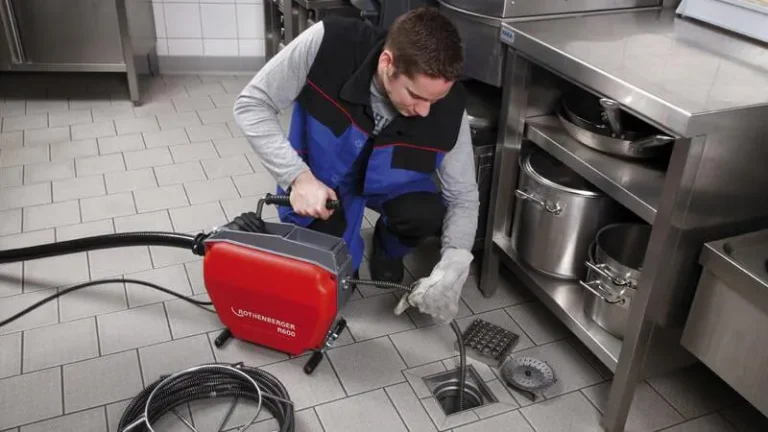
The Importance of Communication in Relationships
Effective communication is foundational to any successful relationship. It requires more than just exchanging words; it calls for active engagement, understanding, and responsiveness. In romantic partnerships, friendships, and even professional interactions, the ability to convey thoughts, feelings, and needs clearly can either facilitate connection or lead to misunderstandings. When focusing on communication in relationships, it’s crucial to recognize that it encompasses both verbal and non-verbal forms. Successful communication fosters intimacy, builds trust, and enhances emotional connection, making couples much more resilient against challenges.
Understanding Communication Styles
Communication styles vary widely among individuals due to factors such as personality, upbringing, and past experiences. Understanding these styles is fundamental to effective communication.
- Assertive Communication: This style involves expressing one’s feelings and needs openly and honestly while respecting others. It is often considered the most effective style, promoting clarity and mutual respect.
- Passive Communication: This involves avoiding expressing thoughts or feelings, often leading to misunderstandings and resentment. Individuals may agree publicly but feel unhappy privately.
- Aggressive Communication: This style expresses thoughts and feelings in a hostile manner, leading to confrontation rather than resolution. While straightforward, it can severely damage relationships.
- Passive-Aggressive Communication: This style indirectly expresses negative feelings instead of addressing them openly. It may involve subtle comments or actions that undermine or insult without direct confrontation.
Understanding one’s communication style, as well as that of a partner, serves as a vital stepping stone toward improving relational dynamics. Couples can utilize tools such as personality assessments to gain insight into their communication preferences and learn how to navigate them effectively.
Benefits of Open Dialogue
Open dialogue in relationships enables individuals to share thoughts and feelings without fear of judgment. This openness has multiple benefits, including:
- Enhanced Trust: When partners feel free to share their thoughts and concerns, it fosters a trusting environment.
- Reduced Conflict: With open lines of communication, partners can address small issues before they escalate into significant conflicts.
- Greater Understanding: Open communication helps partners understand each other’s perspectives and needs, leading to increased empathy.
- Stronger Bonding: Sharing thoughts and emotions creates deeper connections, promoting emotional intimacy.
To cultivate open dialogue, couples should set aside dedicated time for discussions that encourage transparency and openness, ensuring that each person feels heard and valued.
Common Communication Barriers
Despite the importance of communication, various barriers can hinder effective exchanges between partners, including:
- Assumptions: Assuming that the partner knows one’s feelings without verbalizing them can lead to misunderstandings.
- Distractions: In today’s digital age, distractions from devices can divert attention from meaningful conversations.
- Emotional Baggage: Past experiences can shape how individuals communicate, sometimes negatively impacting present interactions.
- Language and Context: Misunderstandings can arise from differences in vocabulary or cultural contexts, emphasizing the need for clarity.
Recognizing these barriers is the first step toward breaking them down. Couples can engage in active listening and ensure they devote full attention during discussions to mitigate these issues.
Essential Techniques for Effective Communication in Relationships
To foster better communication, employing specific techniques can significantly enhance the quality of interactions between partners.
Active Listening Skills
Active listening goes beyond hearing words; it involves fully concentrating, understanding, responding, and remembering what is being said. Active listening skills include:
- Reflecting Back: Paraphrasing what the speaker has said to ensure understanding.
- Non-verbal Cues: Using eye contact, nodding, and other body language to show engagement.
- Avoiding Interruptions: Allowing the speaker to express their thoughts fully before responding.
By practicing active listening, partners can enhance mutual respect and understanding, paving the way for deeper connections. Often, it helps to ask open-ended questions to encourage more profound conversations and explore feelings further.
Using “I” Statements
“I” statements are a powerful tool for effective communication. They focus on personal feelings rather than making accusatory “you” statements, which can provoke defensiveness. An “I” statement typically follows this structure:
I feel [emotion] when [situation] because [reason].
For example, instead of saying, “You never listen to me,” one might express, “I feel ignored when you look at your phone while I’m talking because it seems like what I say isn’t important.” This approach helps to express feelings constructively and invite constructive dialogue.
Practicing Empathy
Empathy is the ability to understand and share the feelings of another. Practicing empathy in communication involves:
- Validation: Acknowledging and validating the other person’s feelings, even if you may not agree.
- Perspective-Taking: Considering how the other person might be feeling and why they feel that way.
- Compassionate Responses: Responding with care and concern to show support for their emotions.
Empathy can transform conversation dynamics, fostering connection and intimacy while reducing the likelihood of conflict.
Improving Communication during Conflicts
Conflict is a natural part of relationships, but how partners navigate conflict can strengthen or damage their bond. Here are several strategies for managing conflicts effectively.
Conflict Resolution Strategies
Engaging in constructive conflict resolution can prevent many disputes from escalating. Effective strategies include:
- Stay Solution-Oriented: Focus on finding solutions rather than dwelling on the problem.
- Take Breaks: If emotions run high, taking a pause can prevent hurtful comments and allow time for reflection.
- Collaborative Problem-Solving: Work together to brainstorm and agree on a mutually beneficial solution instead of competing for who is “right.”
These strategies promote collaboration and understanding, aiding in maintaining respect for one another even amid disagreements.
Maintaining Calmness
During conflicts, emotions can often escalate. Techniques for maintaining calmness include:
- Deep Breathing: Taking slow, deep breaths can help regulate emotions and promote relaxation.
- Timeouts: Taking time apart can foster a cooler head for effective problem-solving.
- Mindfulness Techniques: Practicing mindfulness can help partners stay focused on the present and prevent ruminating over past grievances.
Couples should develop personal strategies to manage stress, ensuring that they remain calm when discussing contentious issues.
Finding Common Ground
Identifying common interests or goals can foster cooperation during conflicts. Key steps include:
- Shared Values: Discussing shared values and goals can remind partners why they are committed to one another, reinforcing their bond.
- Compromise: Finding a middle ground or compromise helps each partner feel heard and valued, forging a stronger connection.
- Collaborative Decision-Making: Together, create a list of solutions where both partners agree on the importance of certain needs and expectations.
By actively seeking common ground, couples can cultivate their problem-solving skills and deepen their mutual respect.
Signs of Healthy and Unhealthy Communication in Relationships
Recognizing the signs of both healthy and unhealthy communication is crucial for enhancing relational dynamics.
Identifying Positive Communication Habits
Healthy communication patterns include:
- Open and Honest Discussions: Being willing to share thoughts and feelings freely.
- Respectful Engagement: Listening attentively and responding in a non-judgmental manner.
- Non-verbal Harmony: Ensuring that non-verbal signals like body language and tone match verbal communication.
Individuals in healthy relationships foster openness and respect, allowing for the resolution of issues without hostility.
Recognizing Toxic Patterns
Unhealthy communication can manifest in various ways, including:
- Dismissiveness: Ignoring or invalidating the partner’s feelings.
- Constant Criticism: Focusing on flaws instead of strengths, leading to resentment.
- Stonewalling: Withdrawing from communication altogether, leading to feelings of abandonment.
Recognizing these signs early helps partners address issues before they escalate and damage the relationship.
Tools for Self-Assessment
Self-assessment tools can help identify communication styles and habits. Consider using:
- Relationship Assessments: Online questionnaires that gauge communication styles, strengths, and weaknesses.
- Journaling: Keeping a relationship journal to reflect on interactions and track progress in communication.
- Feedback Loops: Asking partners for feedback on how conversations are perceived can provide insight into communication effectiveness.
These tools promote growth and awareness, enabling partners to develop healthier patterns of communication.
Building a Culture of Communication in Relationships
Creating and nurturing a culture of communication within relationships takes continuous effort and intention. Here’s how to foster it:
Setting Communication Goals
Setting clear communication goals provides direction and focus for improving communication within a relationship. Key components include:
- Specificity: Clearly define what areas need improvement (e.g., more empathy during discussions).
- Measurable Outcomes: Establish criteria for measuring success, such as tracking the frequency of effective communication interactions.
- Time-Bound: Set timeframes for achieving these goals to encourage accountability.
Regularly reviewing these goals together fosters a sense of teamwork and shared responsibility for communication growth.
Creating a Supportive Environment
A supportive environment enables open dialogues to flourish. Couples can create this by:
- Dedicate Time: Setting aside time for meaningful discussions, free from distractions.
- Positive Reinforcement: Acknowledging and celebrating successes in communication milestones.
- Encouraging Openness: Fostering an atmosphere where both partners feel safe sharing without fear of criticism.
Supportive environments ease the process of sharing vulnerabilities, essential for deepening emotional bonds.
Continual Learning and Development
Effective communication is an evolving skill. Couples can continue to grow in their abilities by:
- Reading Books: Engaging with literature on effective communication and relationship dynamics.
- Attending Workshops: Participating in workshops or courses that focus on communication skills.
- Seeking Professional Guidance: Engaging a relationship coach or therapist can offer personalized strategies for improvement.
Continual learning strengthens foundations for future growth, equipping partners with skills to navigate future challenges more effectively.
Ultimately, mastering communication in relationships requires dedication and effort. By understanding the importance of communication, practicing essential techniques, navigating conflicts calmly, recognizing signs of health and toxicity, and fostering a culture of communication, couples can enhance their connection and develop a partnership built on mutual understanding and respect.






